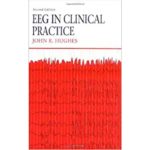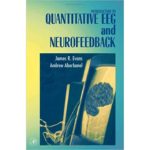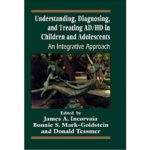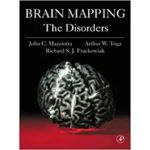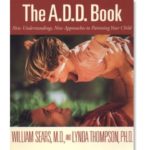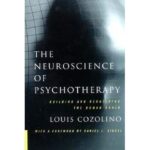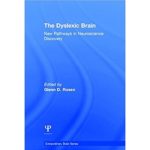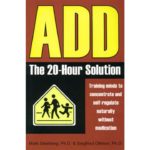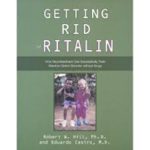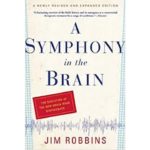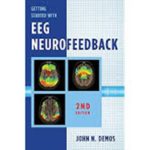Research Articles
Neurofeedback has been shown in many studies to be effective for both children and adults. It can reduce or eliminate the need for medication, and no lasting adverse effects have been reported in research literature.
Four Channel Multivariate Coherence Training: Development and Evidence in Support of a New Form of Neurofeedback (Coben, 2018) Read Abstract
Long-term effects of neurofeedback treatment in autism (Kouijzer et al., 2009) Read Abstract
Enduring effects of neurofeedback in children (Coben et al., 2011) Read Abstract
Neurofeedback – train your brain to train your behavior (Heinrich et al., 2007) Read Abstract
Emerging brain based interventions for children and adolescents: Overview and clinical perspective (Hirschberg et al., 2007) Read Abstract
A Modular Activation/Coherence Approach to Evaluating Clinical/QEEG Correlations and for Guiding Neurofeedback Training: Modular Insufficiencies, Modular Excesses, Disconnections, and Hyperconnections (Walker & Norman 2007) Read Abstract
The approach meets the American Academy of Child and Adolescent Psychiatry’s (AACAP) criteria for “Clinical Guidelines” for recommending evidence-based treatments. See Brown University Publication.
Neurofeedback in the treatment of addictive disorders (Peniston & Kulkosky, 1999) Read Abstract
Alcoholic personality and alpha-theta brainwave training (Penniston & Kulkosky, 1990) Read Abstract
Neurofeedback as a Treatment Intervention in ADHD: Current Evidence and Practice. (Enriquez-Geppert et al., 2019) Read Abstract
Clinical and Experimental Factors Influencing the Efficacy of Neurofeedback in ADHD: A Meta-Analysis. (Bussalb et al., 2019) Read Abstract
Efficacy of Neurofeedback Versus Pharmacological Support in Subjects with ADHD. (Gonzalez-Castro, et al., 2016) Read Abstract
Neurofeedback in children with attention-deficit/hyperactivity disorder (ADHD)– a controlled multicenter study of a non-pharmacological treatment approach (Holtmann, Pniewski, Wachtlin, Worz, & Strehl, 2014). Read Abstract
Neurofeedback with children with attention deficit hyperactivity disorder: A randomized double-blind placebo (deBeus & Kaiser, 2011). Read Abstract
Neurofeedback and standard pharmacological intervention in ADHD: a randomized controlled trial with six-month follow-up (Meisel, Servera, Garcia-Banda, Cardo, & Moreno, 2013). Read Abstract
Neurofeedback training in children with ADHD: 6-Month follow-up of a randomized controlled trial (Gevensleben et al., 2010) Read Abstract
Neurofeedback treatment for attention-deficit/hyperactivity disorder in children: A comparison with methylphenidate (Fuchs, Birbaumer, Lutzenberger, Gruzelier, & Kaiser, 2003). Read Abstract
Place of electroencephalographic biofeedback for attention-deficit/hyperactivity disorder (Hirshberg, 2007). Read Abstract
Functional neuroimaging evidence supporting neurofeedback in ADHD (Lévesque, & Beauregard, 2011). Read Abstract
Effect of neurofeedback training on the neural substrates of selective attention in children with attention deficit/hyperactivity disorder: A functional magnetic resonance imaging study (Lévesque, Beauregard, & Mensour, 2006). Read Abstract
Clinical utility of EEG in attention deficit hyperactivity disorder (Loo & Barkley, 2005). Read Abstract
In-School Neurofeedback Training for ADHD: Sustained Improvements From a Randomized Control Trial (Steiner, Frenette, Rene, Brennan, & Perrin, 2014). Read Abstract
Neurofeedback and Cognitive Attention Training for Children with Attention-Deficit Hyperactivity Disorder in Schools (Steiner, Frenette, Rene, Brennan, & Perrin, 2014). Read Abstract
Discourse on the development of EEG diagnostics and biofeedback for attention-deficit/hyperactivity disorders (Lubar, 1991). Read Abstract
Neurofeedback assessment and treatment for attention deficit/hyperactivity disorders (Lubar & Lubar, 1999). Read Abstract
Overcoming the barriers to effective treatment for attention-deficit/hyperactivity disorder: A neuro-educational approach (Monastra, 2005). Read Abstract
Electroencephalographic biofeedback in the treatment of attention-deficit/hyperactivity disorder (Monastra, Lynn, Linden, Lubar, Gruzelier, & LaVaque, 2005). Read Abstract
The effects of stimulant therapy, EEG biofeedback, and parenting style on the primary symptoms of attention deficit/hyperactivity disorder (Monastra, Monastra, & George, 2002). Read Abstract
Neurofeedback for the treatment of children and adolescents with ADHD: a randomized and controlled clinical trial using parental reports (Nezla, Assmus, Gundersen, & Elgin, 2012). Read Abstract
A comparison of EEG biofeedback and psychostimulants in treating attention deficit/hyperactivity disorders (Rossiter & LaVaque, 1995). Read Abstract
EEG biofeedback: A new treatment option of ADD/ADHD. Neuro Diagnostic and Neurotherapy Center (Alhambra et al., 1995). Read Abstract
Electroencephalographic biofeedback (neurotherapy) as a treatment for attention deficit hyperactivity disorder: rationale and empirical foundation (Monastra, 2005). Read Abstract
Effectiveness of EEG biofeedback as compared with methylphenidate in the treatment of attention-deficit/hyperactivity disorder: A clinical outcome study. (Nazari et al., 2011) Read Abstract
Neurofeedback in ADHD: A single-blind randomized controlled trial. (Bakhshayesh et al., 2011) Read Abstract
Controlled evaluation of a neurofeedback training of slow cortical potentials in children with attention deficit/hyperactivity disorder (ADHD). (Drechsler et al., 2007) Read Abstract
Using neurofeedback to lower anxiety symptoms using individualized qEEG protocols: A pilot study (Dreis et al., 2015). Read Abstract
Effectiveness of Neurofeedback Therapy in Children with Separation Anxiety Disorder (Hashemian et al., 2014). Read Abstract
A review of EEG biofeedback treatment of anxiety disorders. (Moore, 2000). Read Abstract
Connectivity-guided neurofeedback for autistic spectrum disorder (Coben, 2007). Read Abstract
The importance of electroencephalogram assessment for autistic disorders (Coben, 2009). Read Abstract
EEG power and coherence in autistic spectrum disorder (Coben, Clarke, Hudspeth, & Barry, 2008). Read Abstract
Connectivity theory of autism: Use of connectivity measures in assessing and treating autistic disorders (Coben & Myers, 2008). Read Abstract
Assessment-guided neurofeedback for autistic spectrum disorder (Coben & Padolsky, 2007). Read Abstract
Emerging empirical evidence supporting connectivity-guided neurofeedback for autistic disorders (Coben & Wagner, 2011). Read Abstract
A stable pattern of EEG spectral coherence distinguishes children with autism from neuro-typical controls – a large case control study (Duffy & Als, 2012). Read Abstract
Efficacy of neurofeedback for children in the autistic spectrum: A pilot study (Jarusiewicz, 2002). Read Abstract
Autism and EEG phase reset: A unified theory of deficient GABA mediated inhibition in thalamocortical connections (Thatcher, North, Neubrander, Biver, Cutler, & DeFina, 2008). Read Abstract
Atypical development of white matter microstructure of the corpus callosum in males with autism: a longitudinal investigation (Travers et al., 2015). Read Abstract
Resting state EEG abnormalities in autism spectrum disorders (Wang et al., 2013). Read Abstract
Treatment of chronic fatigue with neurofeedback and self-hypnosis. (Hammond, 2001). Read Abstract
EEG biofeedback as a treatment for chronic fatigue syndrome: A controlled case report. (James & Folen, 1996). Read Abstract
The four progressive stages of the CFS experience: A coping tool for patients (Fennell, 1995). Read Abstract
Surface and LORETA neurofeedback in the treatment of post-traumatic stress disorder and mild traumatic brain injury. (Foster & Thatcher, 2015). Read Abstract
QEEG, brain rate, executive functions and neurofeedback training in patients with traumatic brain injury. (Zorcec et al., 2011). Read Abstract
Electoencephalogram biofeedback for reading disability and traumatic brain injury (Thornton & Carmody, 2005). Read Abstract
Traumatic brain injury. (Alliance, 1997). Read Abstract
The Impact of Coherence Neurofeedback on Reading Delays in Learning Disabled Children: A Randomized Controlled Study (Coben 2015). Read Abstract
Follow-up study of learning-disabled children treated with neurofeedback or placebo (Becerra et al., 2006). Read Abstract
Quantitative EEG abnormalities in a sample of dyslexic persons (Evans, 1996). Read Abstract
EEG and behavioral changes following neurofeedback treatment in learning disabled children (Fernandez et al., 2003). Read Abstract
Learning disabilities from identification to intervention. New York, NY: Guilford Press (Fletcher, 2007). Read Abstract
Electrophysiological correlations of dyslexic subtypes (Flynn et al., 1992). Read Abstract
Planum temporale asymmetry and year advantage in dichotic listening in developmental dyslexia and Attention-Deficit/Hyperactivity Disorder (ADHD) (Foster et al., 2002). Read Abstract
Neurofeedback treatment of two children with learning, attention, mood, social, and developmental deficits (Jacobs, 2005). Read Abstract
Neurofeedback for elementary students with identified learning problems (Orlando & Rivera, 2004). Read Abstract
Functional neuroimaging studies of reading and reading disability (developmental dyslexia) (Pugh et al., 2000). Read Abstract
Examining reading development and reading disability in English language learners: Potential contributions from functional neuroimaging (Pugh et al., 2005). Read Abstract
Neuroimaging studies of reading development and reading disability (Pugh et al., 2001). Read Abstract
Functional neuroimaging studies of reading development and reading disability (Puch et al., 2000). Read Abstract
Electoencephalogram biofeedback for reading disability and traumatic brain injury (Thornton & Carmody, 2005). Read Abstract
The neurophysiology of dyslexia: A selective review with implications for neurofeedback remediation and results of treatment in twelve consecutive patients (Walker & Norman, 2006). Read Abstract
Different brain activation patterns in dyslexic children: Evidence from EEG power and coherence patterns for the double deficit theory of dyslexia (Arns et al., 2006). Read Abstract
Repetitive transcranial magnetic stimulation in depression: Protocols, mechanisms, and new developments (Spronk et al., 2011). Read Abstract
Current status of QEEG and neurofeedback in the treatment of clinical depression (Walker et al., 2007). Read Abstract
Clinical use of an alpha asymmetry neurofeedback protocol in the treatment of mood disorders (Baehr et al., 1999). Read Abstract
Obsessive compulsive disorder and the efficacy of qEEG-guided neurofeedback treatment: A case series. (Sürmeli & Ertem, 2011). Read Abstract
QEEG-guided neurofeedback in the treatment of obsessive compulsive disorder. (Hammond, 2003). Read Abstract
A pilot study of neurofeedback for chronic PTSD. (Gapen et al., 2016). Read Abstract
EEG neurofeedback as adjunct to psychotherapy for complex developmental trauma-related disorders: Case study and treatment rationale. (Fisher et al., 2016). Read Abstract
Quantitative electroencephalogram (qEEG) in combat veterans with post-traumatic stress disorder (PTSD). (Jokić-Begić & Begić, 2003). Read Abstract
